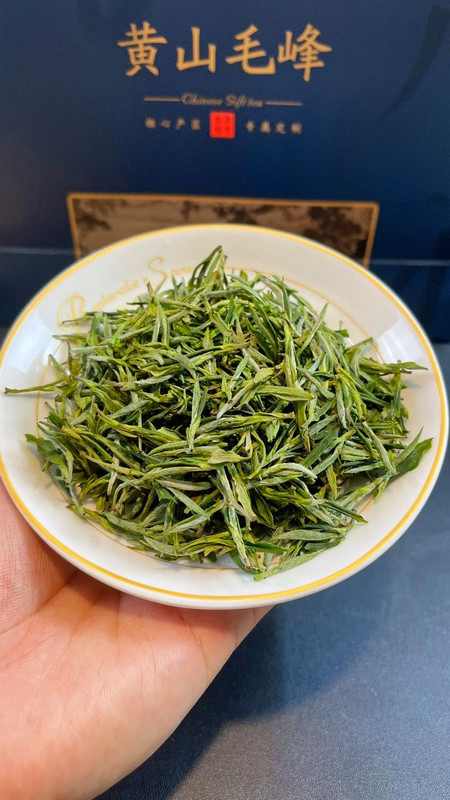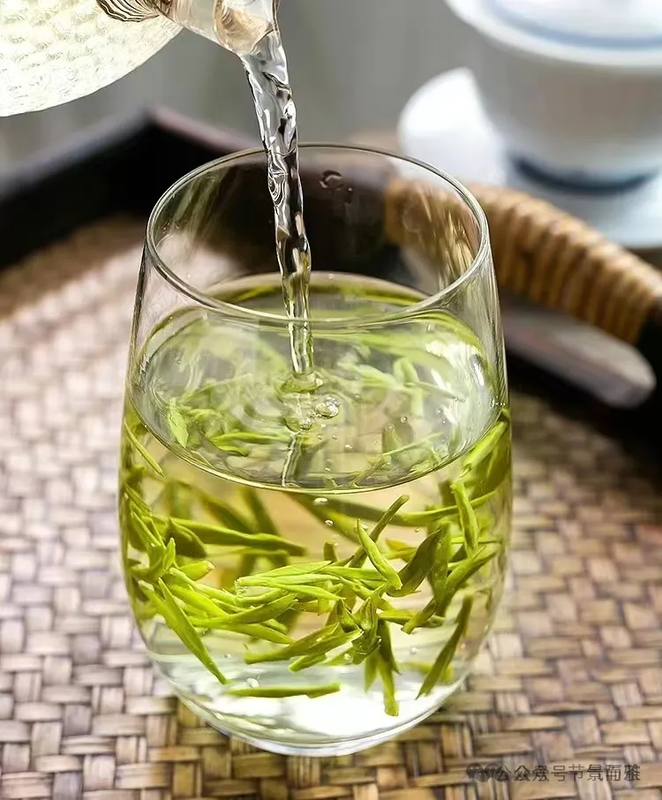Nestled in the mist-clad slopes of Mount Huangshan in Anhui Province, China, emerges a tea as elegant and resilient as the ancient bamboo groves that cloak its peaks: 黄山翠竹 (Huángshān Cuìzhú), or “Emerald Bamboo of Huangshan.” This vibrant green tea, celebrated for its distinctive flat, needle-like shape and crisp flavor, has been a testament to Anhui’s tea-making mastery since its creation in the late 20th century.

A Legacy Forged by Nature and Innovation
The story of Huangshan Cuizhu begins in the 1980s when tea masters at the Huangshan Tea Research Institute sought to craft a beverage that captured the essence of Mount Huangshan—a UNESCO World Heritage Site renowned for its granite spires, pine-clad cliffs, and sea of clouds. Inspired by the slender, upright leaves of the region’s wild bamboo, they shaped a tea that mirrors the plant’s grace, blending geography with poetic imagery. Today, it is produced in limited quantities, with batches often reserved for state banquets or gifted as cultural ambassadors.
Artistry in Every Leaf
Huangshan Cuizhu’s creation is a meticulous four-hour process:
- Plucking: Only the tenderest buds and one leaf are hand-selected in early spring, with buds measuring 2.0–2.5 cm.
- Withering: Fresh leaves are spread on bamboo trays for 1–2 hours under natural sunlight to reduce moisture gently.
- Fixation (杀青): Leaves are stir-fried in woks at 110–130°C, using light, rhythmic motions to preserve emerald hues and grassy freshness.
- Shaping: High-velocity tossing in bamboo trays curls buds into “bamboo leaf” shapes, with leaves partially enveloping the tip.
- Drying: Three stages of炭火烘焙 (charcoal roasting) at 60°C lock in aroma and reduce moisture to 5%.
- Sorting: Artisans handpick debris, ensuring only intact buds remain.
Aesthetic and Sensory Delight
The finished tea dazzles with its appearance: flat, jade-green strips resembling bamboo leaves, with silvery fuzz and a needle-like straightness. Brewed at 85°C, it unfurls to reveal:
- Aroma: Fresh orchid and chestnut notes with a hint of seaweed.
- Liquor: Luminous yellow-green, crisp and viscous.
- Flavor: A symphony of sweetness and umami, balanced by a lingering chestnut finish.
- Leaves: Plump, emerald-green buds with intact silver tips.
Brewing Ritual
To honor its complexity:
- Use 3g of tea per 150ml glass or porcelain vessel.
- Pre-warm the pot with 85°C water, discard, then add leaves.
- Infuse for 30 seconds, adjusting for subsequent brews (total 3 infusions).
- Observe the “dancing needles”—leaves that stand erect before settling gracefully.
Authenticity and Grading
Genuine Huangshan Cuizhu is distinguished by:
- Appearance: Flat, slender needles without broken tips.
- Color: Vibrant jade-green hue (not dull or yellowed).
- Aroma: Fresh, not grassy or stale.
Grading follows strict standards:
- Supreme Grade: Entirely composed of silvery buds (≥45,000 tips/kg).
- Special Grade: One bud with a tender leaf (≥25,000 tips/kg).
- Premium Grade: One bud with two leaves.
Prices range from ¥800–¥2,000/500g for supreme grades, reflecting its labor intensity and limited yield (≈20kg per mu annually).
Healthful Elixir
Rich in catechins (28–34%) and L-theanine, Huangshan Cuizhu offers:
- Antioxidant defense against free radicals.
- Metabolic support, aiding weight management.
- Mental clarity, with 25–35mg caffeine per cup.
- Oral health benefits, inhibiting plaque bacteria.
Legacy and Contemporary Reverence
Huangshan Cuizhu transcends its role as a beverage—it is a cultural artifact. The Huangshan Tea Museum preserves 1980s processing tools, while annual “Emerald Bamboo Festivals” celebrate harvests with traditional folk performances. As climate-resilient cultivars emerge, this tea remains a testament to Anhui’s agrarian heritage, its bamboo-like leaves piercing through time to delight modern palates.
In every sip, one tastes not just tea, but the mist of Huangshan, the patience of generations, and the enduring spirit of China’s tea masters.



